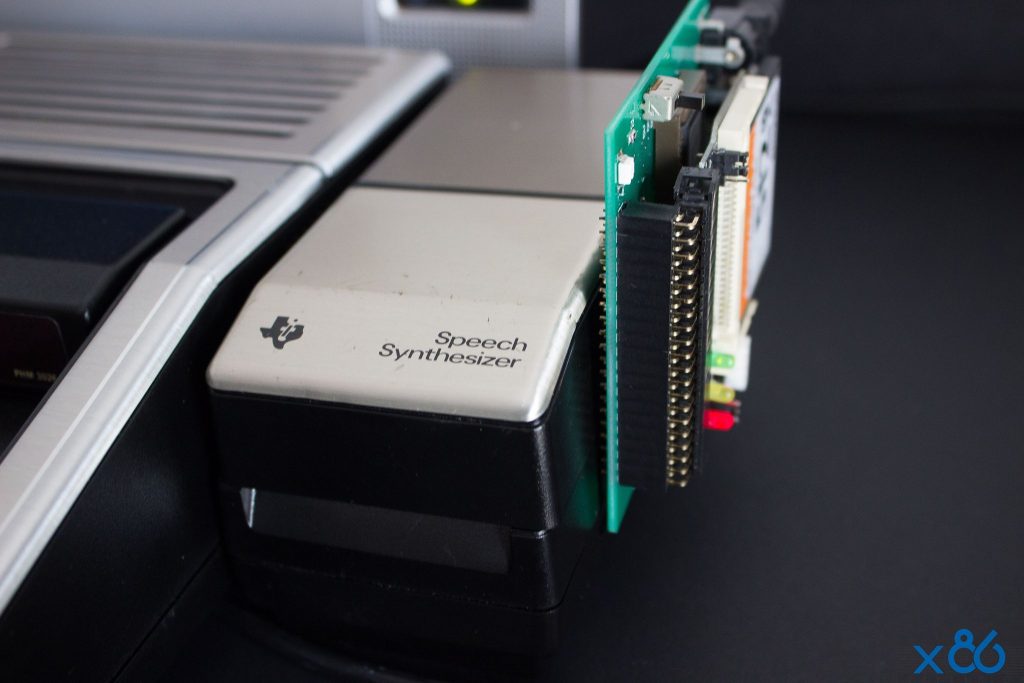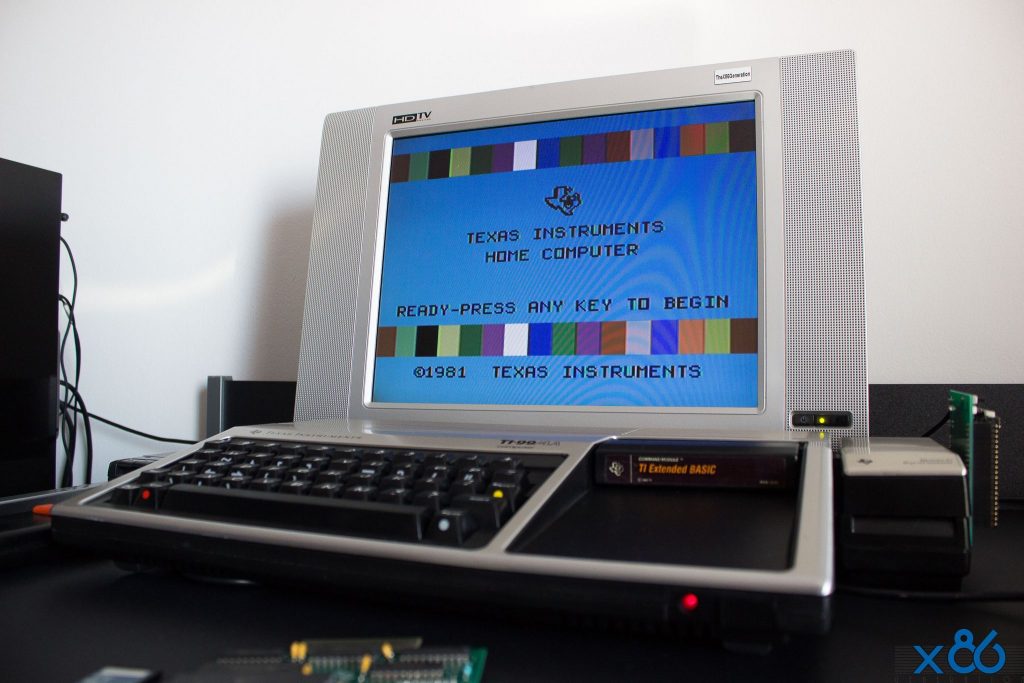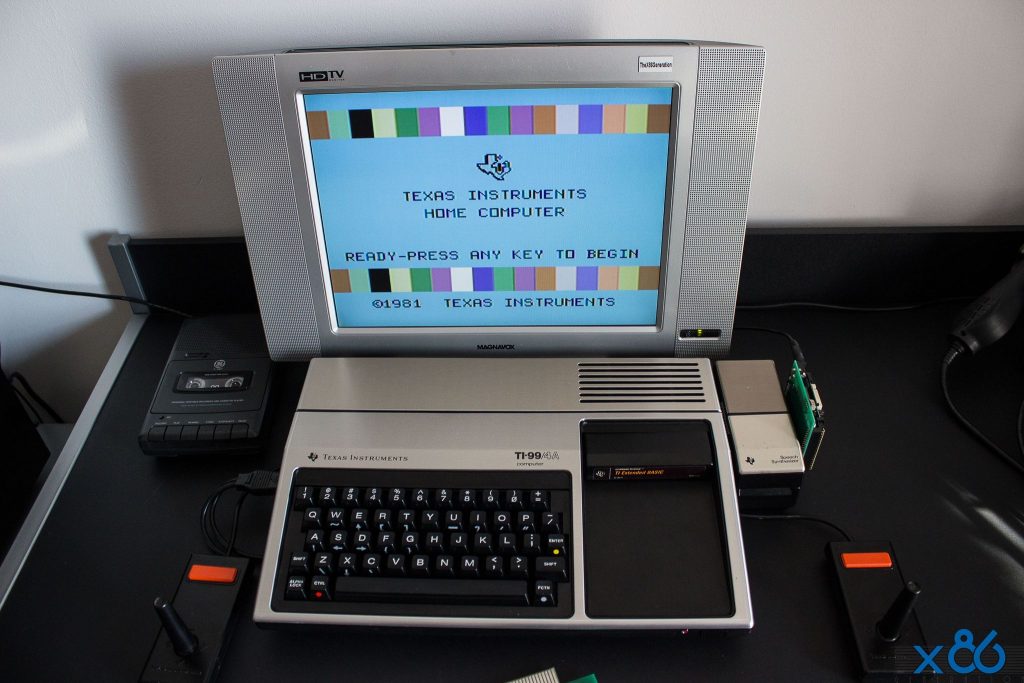YEAR: 1981
INITIAL PRICE: $525, $1,901 in 2021
“Now computers are like toasters, cheap and un-interesting.”
The Texas Instruments TI-99/4A is a home computer released in June 1981 in the United States. It is an enhanced version of the less successful TI-99/4 which was released in late 1979. The TI-99/4 and TI-99/4A are the first 16-bit home computers, using the Texas Instruments TMS9900 16-bit CPU. Both models include hardware support for sprites, using TI’s own chips, and multi-channel sound, making them some of the first home computers to include such custom coprocessors, alongside the Atari 8-bit family also introduced in 1979.
Texas Instruments was one of the biggest manufacturing and development company for semiconductor and microchip since their founding in 1951. TI has been involved in the creation of many consumer electronics, from watches to radios and also their iconic product, the Speak &Spell.
In 1979 companies like apple and RadioShack were already in the home computer market so TI wanted to be part of the home computer business as fast as possible. TI also saw Commodore International Corporation how they converted their calculator business into a home computer one, so they decided to bring to the market a home computer as well.
In 1979 TI released the TI99/4 (without the A), a system that did not sell very well. That makes finding one now, actually difficult. It retailed for a ridiculous initial price of $1500, that is the equivalent of $5,434.17 in 2021. By 1981 the sales of the TI99/4 were going nowhere.

The company lost 400 million dollars in the computer business. That’s almost 1.5 billion dollars in todays money!
By June 1981 TI released a new model, the TI99/4A that was promised to fix many of the previous models issues and also they got the price down to $525 which made the TI99 /4A sell much better than the original but it was still far behind its competition, like Commodore VIC-20, Apple II or the Atari 8-bit line. In 1983, TI announced that the TI99 /4A will sell for only $49. This is more than 90% off! Why?
TI had this strategy to sell all remaining stocks at a very low price so people can get their hands on one, then TI would charge their customers for the additional software and peripherals. This strategy never worked out for them, because developers where not very satisfied with TI`s terms leaving the consumers with a very powerful system with not such great software.
The TI99/4A has the TMS9900 processor, being the first 16-bit processor included in a home computer, 16 kilobytes of RAM and the TMS 9918A graphics chip, that was also used in the Coleco Adam computer and the Sega SG-1000. This chip was way ahead of its time for a home computer!
This computer has some really great expansion options, like disk drives, memory expansions and the most cool option, the speech synthesis.
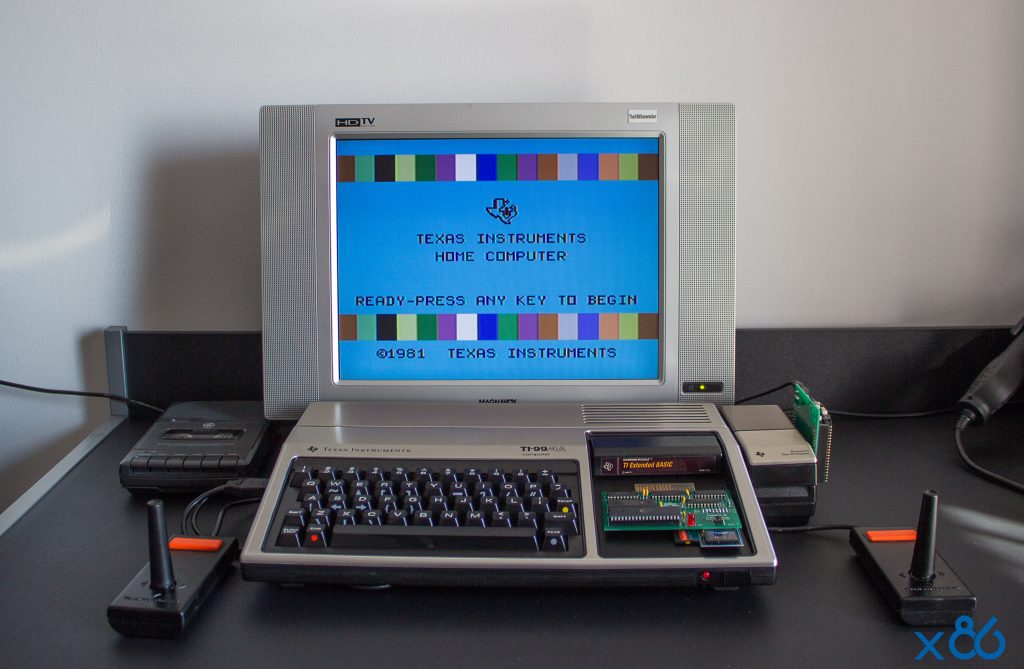
| Type | Home computer |
|---|---|
| Release date | June 1981 |
| Introductory price | US$525 (equivalent to $1,901in 2021) |
| Discontinued | March 1984 |
| Units shipped | 2.8 million |
| Media | |
| Operating system | TI BASIC |
| CPU | TMS9900 @ 3 MHz |
| Memory | 16 KB RAM 256 bytes scratchpad RAM |
| Graphics | TMS9918A |
| Predecessor | TI-99/4 |
Accessories that I own
Speech synthesizer
In the late 1970s and early 1980s, TI was a pioneer in speech synthesis because of its Texas Instruments LPC Speech Chips which were used in its Speak & Spell toys. A plug-in speech synthesizer module was available for the TI-99/4 and 4A. Speech synthesizers were offered free with the purchase of a number of cartridges and were used by video games such as Alpiner and Parsec. Alpiner’s speech includes male and female voices and can be sarcastic when the player makes a bad move.
The synthesizer uses a variant of linear predictive coding and has a small in-built vocabulary. The original intent was to release small cartridges that plugged directly into the synthesizer unit to increase the device’s vocabulary. However, the success of software text-to-speech in the Terminal Emulator II cartridge cancelled that plan
FlashROM 99
The TI 99/4A Flash ROM Cartridge, or FlashROM 99 for short, is a cartridge for the TI 99/4A home computer that allows for running ROM cartridge images stored on an SD card.
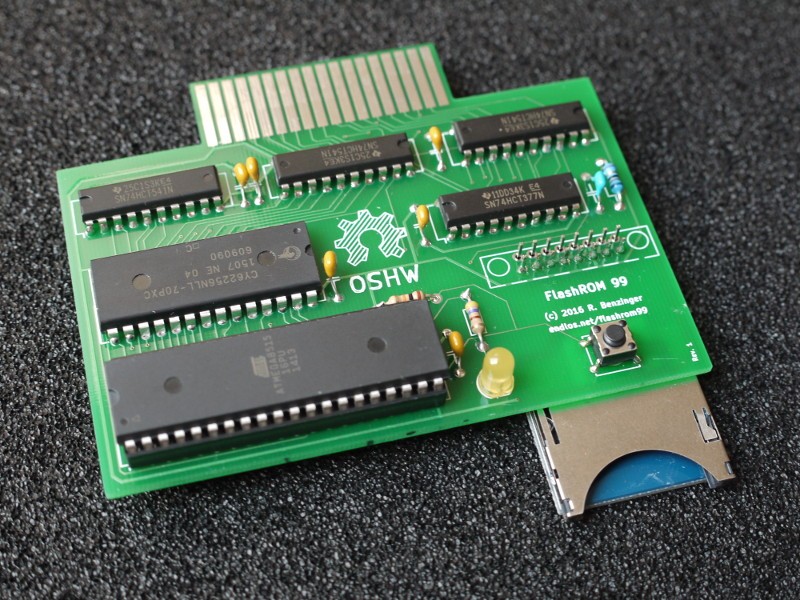
>60xx bank switching scheme. It will not work with programs using GROMs or CRU-based bank switching. The cartridge does not require the Peripheral Expansion Box and runs on both PAL and NTSC consoles.https://endlos99.github.io/flashrom99/
Ti – 99/4A Expansion CF7, Compact Flash Memory Expansion Unit
The drive is actually a simple IDE interface. The compact flash plugs into a compactflash-to-IDE adapter. The adapter then plugs into a controller. The controller has a ROM that contains a device driver that allows Basic and the Disk Manager to operate on the compact flash.

However, due to TI-99/4a’s bus timing, most hard disks and some compact flash cards are not compatible. The ROM implements the original TI file system. It simulates three disk drives and multiple 1600-sector “virtual floppies” called volumes. Each volume’s content is similar to a TI diskette. Each volume is enumerated and is fixed in size. Volumes are “mounted” into a simulated drive (still called DSK1, DSK2 and DSK3) after they have been “formatted”. Volume settings are saved on the Compact Flash and are restored each time the console is restarted. Compact flashes are formatted using a PC floppy disk standard. The ROM will overwrite this with TI-99/4a format.
The Speech Synthesizer module
The speech synthesizer module is a stand-alone unit that fits in-between the console and the peripheral connection cable (if any). It contains a TMS5220 speech synthesis chip and two TMS6100 serial ROMs that hold a fairly limited vocabulary.
The TMS5220 synthesizer chip can receive speech data either from the serial ROMs or directly from the CPU. It contains a 16-byte parallel in / 128-bit serial out FIFO buffer for the latter purpose. It interacts with the CPU via three registers: the Command register (input), the Data register (output) and the Status register (output).
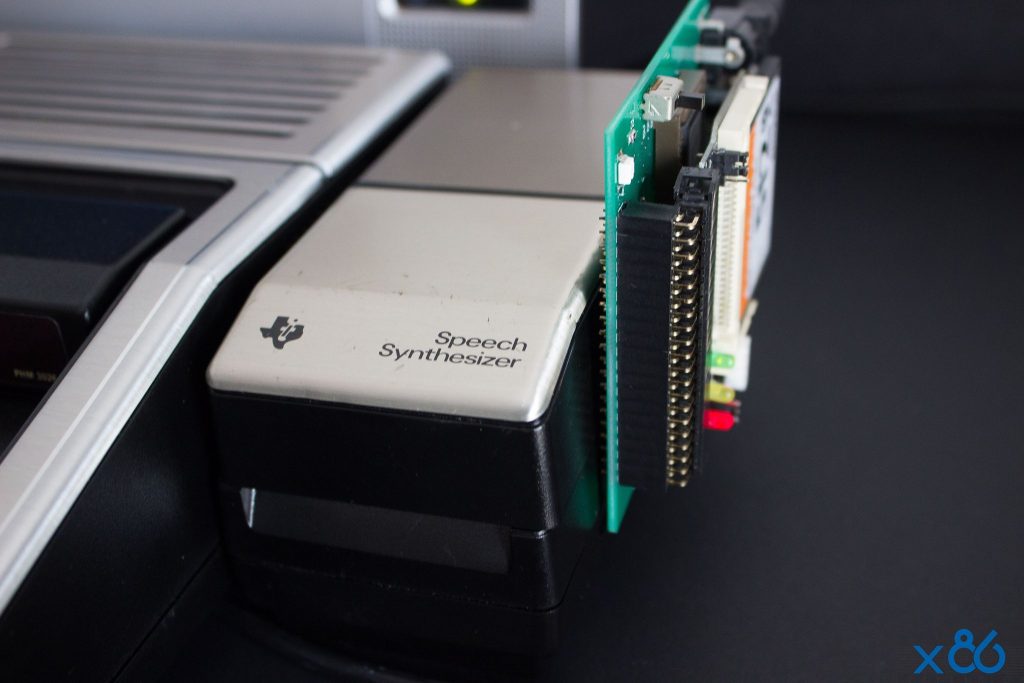
The speech synthesis logic uses the serial data to generate digital speech that is accessible on the I/O pin. This signal is fed to an internal digital-to-analog converter to produce an analog signal on pin SPEAKER, that can be used to drive a speaker. In the case of the TI-99/4A, the analog signal is sent to the TMS9919 sound chip inside the console.

